Hanzhou China, West Lake/Selective Saturation, A Tutorial

|
• Sindbad Hotel Hammamet • Skanes El Hana Hotel • Coralia Club Hotel • Marhaba Palace Hotel |
I have some unfortunate news to report on this project and total 100% transparency is how I feel this should be handled. My planned beneficiaries of this project, innocent very much in need children at a certain orphanage, have fallen victim to their local manager who we have found cannot currently be trusted and I doubt this is likely to change. Decisions need to be made if we're going to carry this project forward and if so who the new beneficiaries will be. I do expect this project to generate significant revenue so I take it very seriously. As you read this I'll be back in the Mae Sot area investigating further. I'll keep you informed. For now I'll still collect images with the intention of making the best most meaningful mosaics possible and as always, I'm asking for and will greatly appreciate your help with the images.
We are still accepting (and pleading for) images of children from SEA. No matter how terrible you think
they are, please send them in anyway. These images will be used to complete a set of 3 high quality mosaics which will be sold to benefit the Karen and Burmese Orphans living in the orphanages and refugee camps. The more images the better, I can
use all you have. Please take the time to go through your images for anything you think might help. If you missed the "No Place to Call Home" special, you can
click on the link and read more about this. Thank you! info@BangkokImages.com
Quick Click Links
Feature Photograph
Hangzhou China, West Lake Selective Saturation, A Tutorial
Photography News of Interest
Readers Submissions
Readers Questions A Snapshot of Bangkok Images Week in Review
Infocus Blog, Setting The ToneT
Feature Photograph *menu

Canon 1ds Mark II, 300mm F2.8L IS USM @F4 1/250th ISO 100
A few years back a friend introduced me to the Siracha Tiger Zoo near Pattaya. I’ve written this article and another here on the place. At first it was a lot of fun because at this certain location in the zoo we had an unobstructed view of the tigers running through water and playing games. It was both fun and challenging coming up with great tiger photos. Photos I’ve never seen the like of anywhere else. (this location/view is no longer available)
But even then we noticed the horrid conditions of the place, but not being knowledgeable about such things we gave them the benefit of the doubt. Unfortunately since, I’ve read at least 4-5 different articles in major newspapers decrying the treatment and conditions of these endangered beasts at Siracha Tiger Zoo. I’ll let you be the judge, but I can tell you that like the infamous Tiger Temple (much worse) I no longer visit nor take clients to the Siracha Tiger Zoo. But that isn’t really what The Featured Photograph is about this week.
Recently I posted a photo of an antelope munching grass , which was so sharp and detailed it was interesting just because of the sharp detail the image revealed. Several readers sent me an email agreeing a sharp detailed picture holds much more interest by virtue of the detail alone. This week’s Feature Photograph is significant because it shows how much more interesting an image is.. when sharp and detailed.

Canon 1ds Mark II, 300mm F2.8L IS USM @F4 1/250th ISO 100
Above you can see a closer crop revealing much more detail. And it made me give pause and consider my own journey as a photographer. When I first started I was doing mostly photojournalism and I couldn’t be bothered with image quality. If you could see the event taking place, I was happy. The technical difficulty presented by the equipment back then was something I didn’t want to be bothered with. It just wasn’t necessary.
Fast forward ten years and I’m making portraits and wedding photos for my own studio and now I’m using digital bodies and higher quality lenses. Certainly the ‘event’ was still my first priority, but to compete in the market the images also needed to be technically perfect. I had to up my game. Just not in one area of image quality, but all areas. I started to develop a sort of pride in critical focus and I’m sure you’ve heard me talk about it many times before.
Lately I’ve noticed many of you lambasting yourselves over critical focus and I worry I’ve over emphasized the subject. Certainly an image is more interesting if sharp and detailed, even if the subject is plain boring. However, you need to keep things in perspective. A suitable sharp image of a space alien, or a golden egg laying goose, is going to be a hit critical focus or not.
Being able to achieve critical focus is a demonstration of our ‘image quality’ skills and the quality of our equipment, but being able to make the intended capture will always be the most important. I’d much rather have an appropriately sharp image of the bride and groom exchanging rings, than a critically sharp image of the ceiling. Perspective is important.
Hanzhou China, West Lake *menu
Tom Tweedel is a good friend with significant experience in China and has self-published several interesting volumes of his travels in China complete with many great images and informative narrative. Last year he visited Thailand for the first time and I had a great time showing him around the area. Somehow he found time to put together a like 340 page book of his travels around Thailand and you can get your copy here! I've got a copy of this book and I can tell you it's well worth it, especially for first time travelers or if you haven't seen more of Thailand than downtown Bangkok.
Tweedel is a good friend with significant experience in China and has self-published several interesting volumes of his travels in China complete with many great images and informative narrative. Last year he visited Thailand for the first time and I had a great time showing him around the area. Somehow he found time to put together a like 340 page book of his travels around Thailand and you can get your copy here! I've got a copy of this book and I can tell you it's well worth it, especially for first time travelers or if you haven't seen more of Thailand than downtown Bangkok.
When Tom agreed to become part of our small select product review team I was both excited and grateful. I hope you enjoy this and future reviews by Tom. For those whose plans include extended travel in Thailand and China I’d recommend contacting Tom and inquiring into obtaining copies of his books. Tom Tweedel is an Austin, TX based photographer and can be reached at: tomsds@austin.rr.com
Hangzhou is a very nice city in East Central China (Shanghai area). For more than a millennia it has been on the top of the “go to” list for well-heeled Chinese to go visit. It has traditionally been a place of learning, culture and beauty. It is often mentioned in the same sentence as another city, Suzhou and usually in the context of “Heaven on Earth”. That set some pretty high expectations.
While not a divine experience it is a very nice city. If someone said “Tom, you're moving to China next week, where do you want to live”, Hangzhou would be on my short list to consider. It has a good blend of both manicured and natural beauty, isn’t as frenetic as the big economic engine cities and is surrounded by very pleasing countryside.
The city itself is home to many attractions. The central attraction is the “West Lake.” Walking the banks, dikes and causeways and seeing the sights is a wonderful way to spend a day.
Hangzhou is also home to a number of museums, a famous temple or two and some cool pagodas sticking up from the forested hills. I photographed my visit there with an early generation “prosumer” Nikon CoolPix 990 which was state of the art at that time.
Part 2 – West Lake and Beyond
West Lake is the central tourist attraction in Hangzhou. It’s a large lake 1-2 miles across whose history stretches back much further. It has been the subject of countless poems, paintings, probably more than a few songs and much artistic contemplation.

West Lake has many different views. This one of the city core across its banks. In that respect it is like a giant Chinese garden, what you see is really a matter of perspective and the same elements can be used several times to give different scenes depending on what direction you look at them.

Looking out to another side you can see some of the islands in the lake as well as the low mountains in the distance. There are three manmade islands in the lake.

In addition to the islands the lake is bisected by 3 causeways. They vary in size but serve to divide the lake into several sub-lakes. Each of these creates its own unique scene. The causeways are quite nice, planted with trees and flowers.

Strolling down the tree lined causeway in a cool afternoon breeze is a very refreshing experience. It would have been nice to come back at other times (night, different seasons etc) to see what a different look this place would have.

At some points along the causeways there are several bridges. Each of these is ornately decorated and has its own story and significance. West Lake is one of those places you should read a book about prior to visiting to really appreciate.

The area around the lake is home to several towers, pagodas and monuments. These scene framed the Baochu Pagoda, an ancient looking tower who’s origins date back to 963. The water plants that dominate the foreground are very common in Chinese lakes. I’m sure much time is spent keeping their numbers in check lest they take over the entire lake.

The Leifeng Pagoda is one of the more prominent structures on the lake. Originally built in 975 to celebrate the birth of a Kings son. It is steeped in both history and legend as it was the prison of the mythical white snake, a supernatural temptress. In reality it did house a mausoleum in which many treasures were found.

There were many small pagoda’s and other structures along the side of the lake. Some of the views were just breathtaking, scenes that could have defined Chinese beauty in a dictionary.

As the afternoon wore on and the sun shifted so did the views and the beauty of the lake. The shadowy mountains in the background gave it a surreal feel.
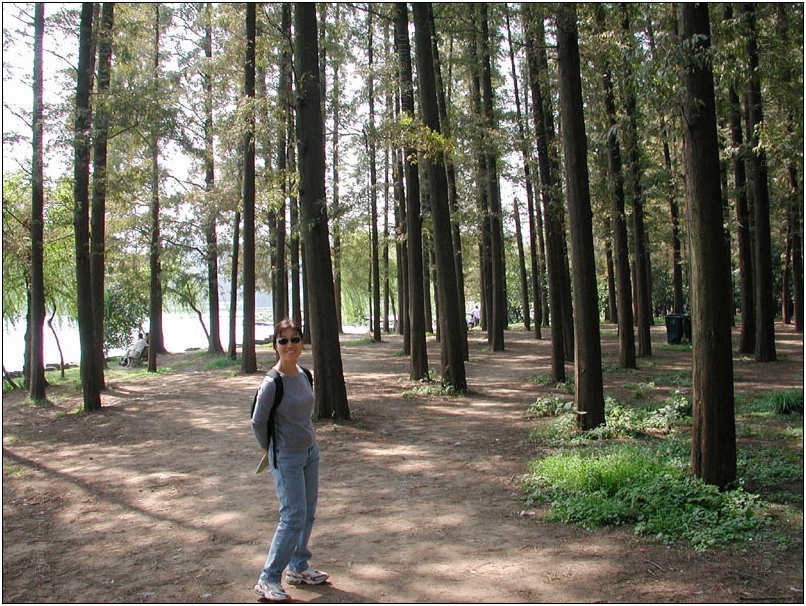
In addition to the stuff along the shore there were several parks adjacent to the lake. Some charged and admission fee but it was well worth it to walk through this grove of tall pine trees without the bustling crowds.

As I mentioned before there are several islands in the lake, one large one and two little ones. There is regular tour boat service to all of them. The big island has a ferry while the small islands are serviced by single operator type craft. The average depth of the lake is less than 3 feet.

The views from the island are not to be missed. The large island actually has a small pond in the middle so that you get a lake within a lake view.

One of the more memorable shots from the trip was in the island looking across the bridge with the Leifeng pagoda in the background.


We arrived back at the ferry dock and found both and interesting sculpture and a vibrant field of flowers.

After enjoying West Lake we saw a few of the other sites before it was time to go. One was a visit to a Silk Museum. This area had quite a vibrant silk industry in the past and Hangzhou has a strong silk market today. At the museum they had a number of artifacts. This one dated from the last dynasty (about 200 years ago).

This silk shirt was found in a tomb and was 1000+ years old. Silk fibers have been found dating back 5000+ years.

While in the silk museum we were just behind a large tourist group of Europeans who got treated to a fashion show of the nice silk products available in the gift shop.

When it was time to go we decided to go out in style (and we almost did). We were going to take the overnight boat up the grand canal to Suzhou, our next destination. We had bought the tickets before and now just needed to get there with our luggage. The distance between our hotel and the dock was not very far, but it was a maze. Rather than fork out of a taxi to go what amounted to maybe 10 blocks we figured we’d save a few yaun and hire this nice looking pedicab.

That was a big mistake. The driver knew way well enough, but the path he selected would have given a Kamikaze pilot the shakes. Plowing through a busy streets at right angles at turtle racing speeds. That vehicle is WAY too close and there was nothing between us and street pizza except some flimsy metal tubing. Next time I’ll pay the extra for the taxi.

The fun wasn’t over when I discovered the thrill of our romantic overnight trip up the grand canal. The boat was a converted barge and assumed all tourists had sea legs and no baggage. Getting on and off without going in the drink was a challenge and our gear (a rolling duffel) had to be stowed in the engine room. And this was the “luxury” boat. The window of our room was just above the waterline. So much for the view..

The bright spot of the tour was the party room, overpriced lousy food. But it had some character and beat inhaling diesel fumes, until the cranked up the Karaoke. Most of our traveling companions were young lovers. When you considered a good percentage of these people probably still lived with their parents (common in China even after marriage at the time) this trip would have been a great opportunity..

After a rather sleepless night (I woke up every time our barge bumped against the tug) we arrived in Suzhou for the next leg of our journey. Looking out at the structures along the water I saw a lot of house boats and apartments. Many looked cobbled together. I wondered about the lives of the people who lived here. What was it like, who were they and how did they see it. Maybe on another trip..
For now Hangzhou was done and the tour of the Gardens and shopping strips was to begin.
Selective Saturation *menu

Olympus E-10, @F3.2 1/200th 36mm ISO 160
Introduction
During workshops one of the most requested “can you show me how” techniques is selective saturation. The technique produces eye catching images popular with amateur photographers and I think with good reason. It allows us to focus on individual elements of a composition, often for the first time. Done properly, selective saturation can really emphasize certain elements of a composition and create an overall attractive image.
Okay, you can tell I’m tip-toeing around the subject so I’ll just tell you, I’m no fan of selective saturation. I think it’s most often overdone and poorly done. But it needn’t be. The actual process is easy, so let’s take a quick look on how it’s done, and then study a couple examples and the choices I made during processing.
The Process
Adobe Photoshop Lightroom
In Lightroom choose the “localized editing” tool (circled in blue below), drop the saturation bar all the way to the left (circled in blue below), and then ‘paint’ the areas you want to be desaturated.

You’ll need to take your time and make sure to paint inside the lines, but you’ll soon be able to produce selective saturation examples with relative ease.
Adobe Photoshop CS5
Adobe Photoshop is a more advanced way of doing the same thing, and it offers you more control and choices along the way. Let’s take a look.

In Photoshop CS5 you first make the entire image black and white, or desaturated, or toned, or Sepia, or anything you like. There are at least a dozen popular ways to make an image black and white inside Photoshop, so for this example I’m using their “Black and White” option. In the example above you can see you select “image/adjustments/black&white” and you’ll then get the black and white dialog box. You can just click ‘okay’ and the image will now be black and white.

Now that your image is black and white, select the ‘history brush’ from the toolbar and brush the areas you want to bring back the color on. You can vary the size and opacity of your brush as you go along to make it more accurate for the size object you’re brushing.
When done, flatten your layers and the image will be complete.
There are much more complicated ways to do the same thing, for example creating a separate layer for each color, or a layer for all colors, or any number of editing layers. But simple or complicated, you can get it done and start turning out selective saturation images within minutes.
Technique
As I said above, in my humble opinion, most selective saturation images are poorly done, overdone, or just don’t add to the composition in a meaningful way. Let’s talk about a few examples and the choices they present.

Canon 1ds Mark II, 70-200mm F2.8L IS USM @F5.6 1/125th 148mm ISO 320
Above is an image of my son practicing his ‘pul-gays’ for Tae-Kwon-Do. The dojo was uninspired, dirty bright white walls with bright harsh lighting. The color images looked terrible, flares, washed out color, and an unattractive background. I processed the image in black and white and studied the scene.
The walls were basically a solid color, white. His gi was a solid color, black. The mat was also a solid color, blue. The scene lent itself nicely to a proper black and white toning. From there the choices were easy, the only parts of the scene not white, black, or blue.. were the patches and script on his gi. A few swipes with the history brush and I’d restored the color in both.
Looking at the completed image it feels like my eyes are drawn to the color. Would it have been better to leave the patches alone and only brush the script on his belt? Perhaps, the dangers of overdoing this sort of thing are very real. I find the more you look at a processed image, the more you’ll realize you did too much.

Nikon D100, 70-200mm F2.8 AF-S VR @F4 1/640th 120mm ISO 200
Using the above image as an example: The original was terribly oversaturated right out of the camera. A combination of late afternoon sun and fall colors produced an image where the bike rider colors blended into the background colors, and not in an attractive way. A proper black and white toning really enhanced the image.
I liked the black and white image just fine, but this being a selective saturation tutorial it would be good to find a part of the scene where we bring the saturation back. To me the helmet was a logical choice. His leathers were blue, the bike is blue, the shoes are blue, but bringing back all the blue would have been over doing it for sure. Instead, I selected the helmet on the top, and a small blue area on the front of the bike which almost goes unnoticed. Notice how modest the changes are? I think this is the best kind of selective saturation example.

Olympus E-10, @F3.2 1/200th 36mm ISO 160
In the above sample I went too far on purpose. But darn it, it looks pretty good that way! Again, my son mountain boarding down a hill wearing the same protective helmet and leathers in our previous example. Except this time I restored the saturation not only in the helmet and the complete leathers, but I couldn’t resist bring out the orange wheels.
Would restoring the color on his face brought it way over the top? I think so. However, remember art is very subjective and as the artist you get to please yourself first. Do what you like and what makes you smile, the hell with everyone else. It’s your camera.. ;o)
Photography News of Interest *menu
Someone seems to think lighting a studio shoot with the light emitted by Ipads is cool. It might be cool to think about, but is highly impractical from a photography standpoint. This stunt belongs in the latest Jackass Movie.

A few months back I predicted the Android phone system would do better than the IPhone and only a few short weeks later Android was outselling IPhones. It must really burn Steve Job’s azz when Steve Wozniak comes out and says Android will beat the IPhone! As you know Steve Wozniak co-founded Apple and is still a major shareholder.

Not long ago I linked you to the Porn Stick detection device in this News Section. It didn’t take long for the device to catch on, but would it surprise you to knowtheir number one customers are female spouses?
You’d better encrypt and hide your porn..

The Panasonic DMC-G2 has a firmware date available and you can get it here.

The Pentax K-5 has a firmware update available and you can get it here.

Over on Digital Photography Review they talk about Sony developing an E-mount camcorder for professional use which takes the Alpha series lenses we use on the NEX-5.
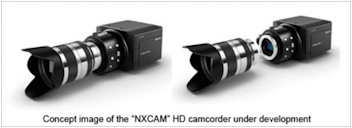
Nikon will be releasing their new SB-700 Speedlight on November 26th. You can read about it here.

The Kuwait government has banned DSLRs in public places with the exception of accredited journalists. Why? No one seems to know for sure, though there seems to be a lot of speculating. I’ll continue to look into this and let you know their official position once it’s made available. This really makes you appreciate living in a free country..
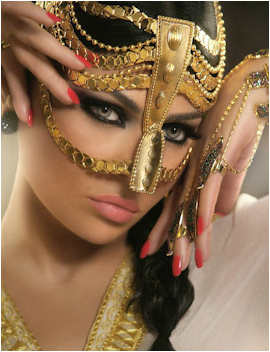
Readers Submissions *menu
Hi Steve,
Here are a few images taken in the middle of November 2009 in Can Tho, Vietnam. The night shots were taken with a Canon 50D & a 50mm 1.4 lens, these were my first attempts at nighttime photography. The daytime shots were taken with a 50D & Canon Powershot S5 IS. All of these images were taken from a small sampan on a five hour tour visiting floating markets outside of Can Tho, rice paper and noodle making places, fruit & vegetable plantations.
Regards Khunklit.








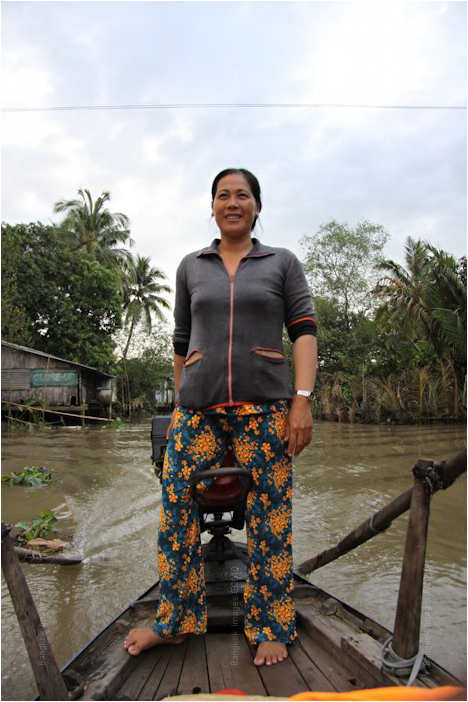
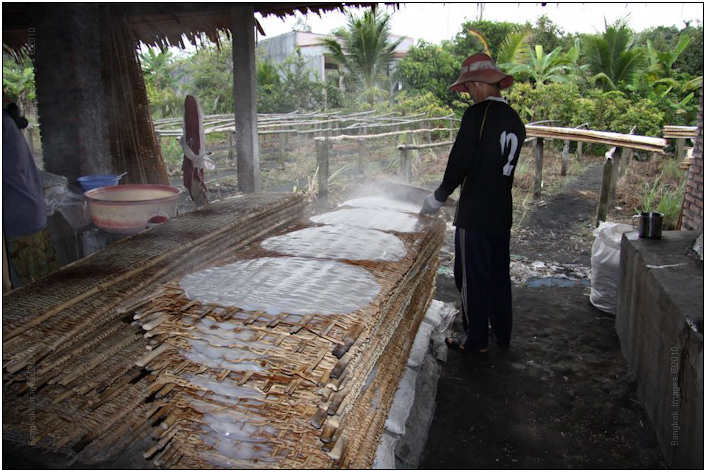
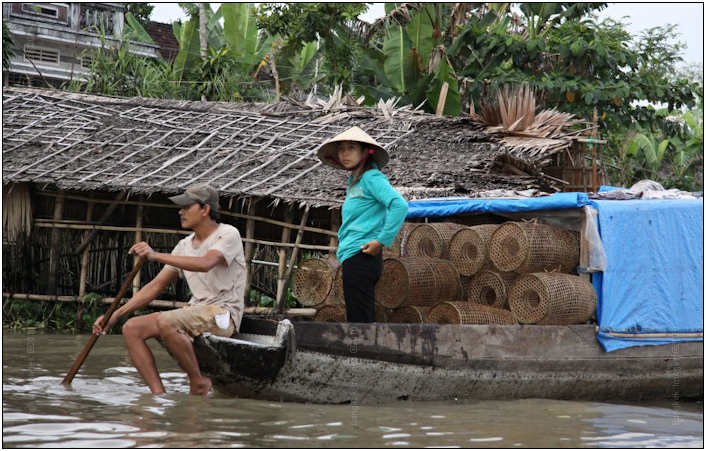

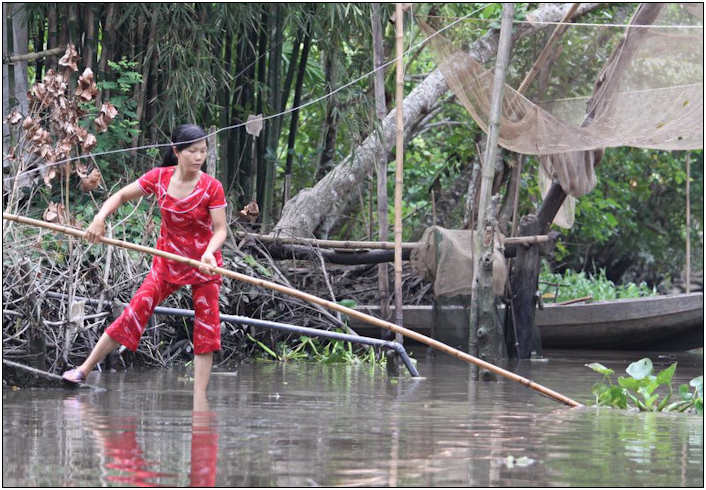
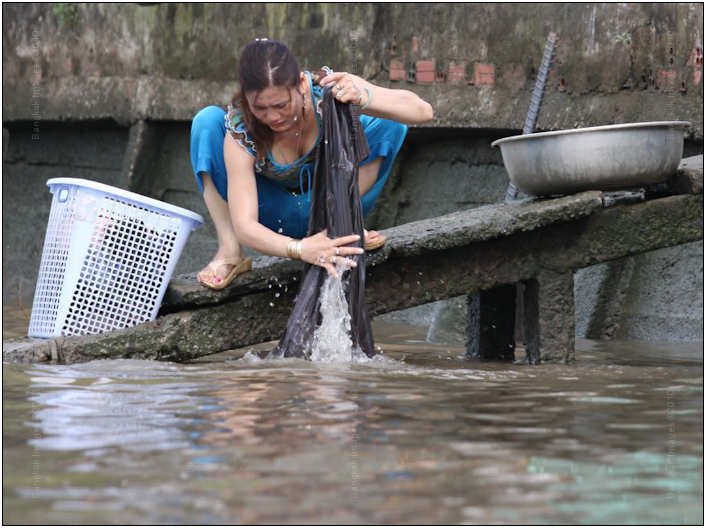
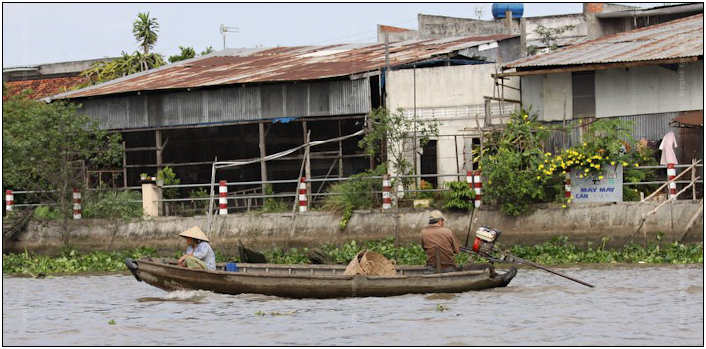
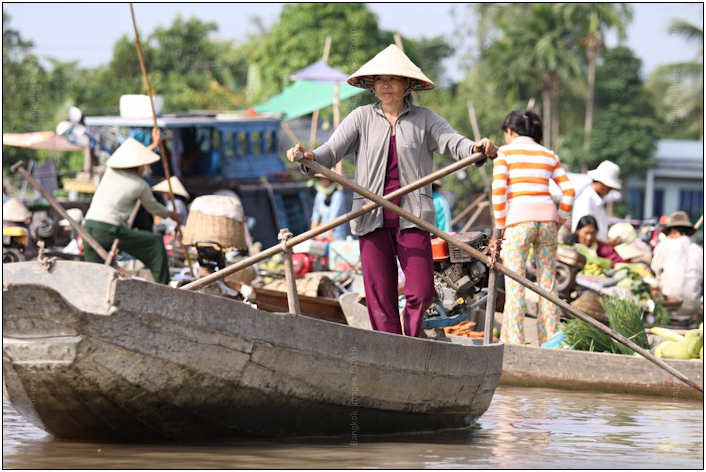
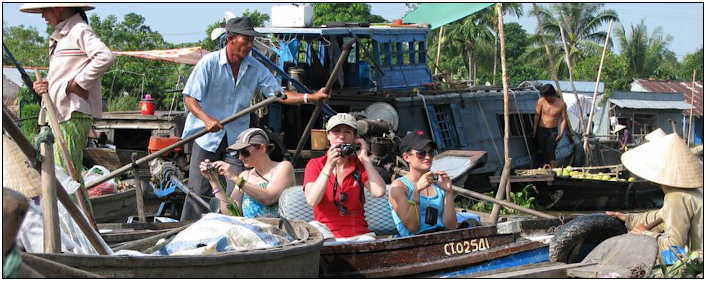
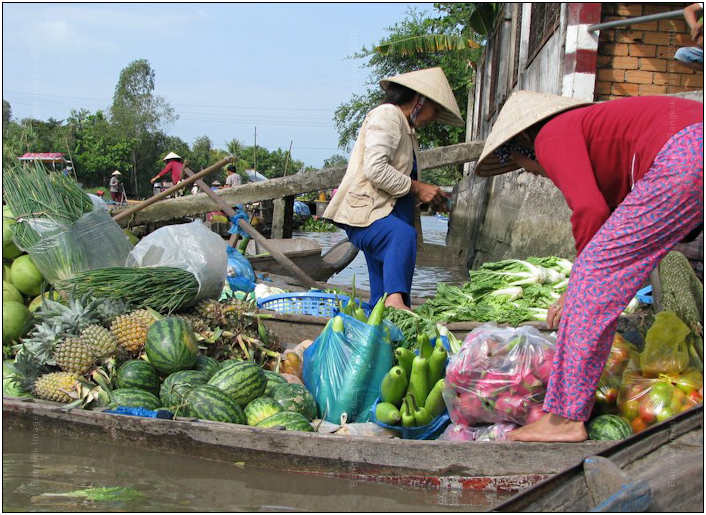
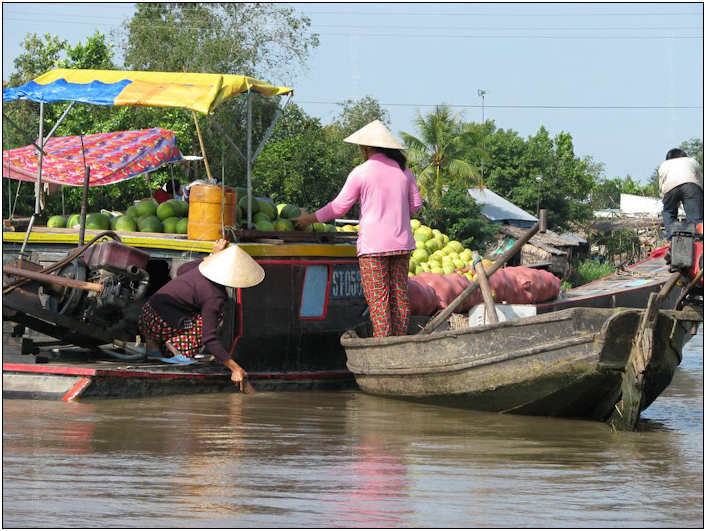
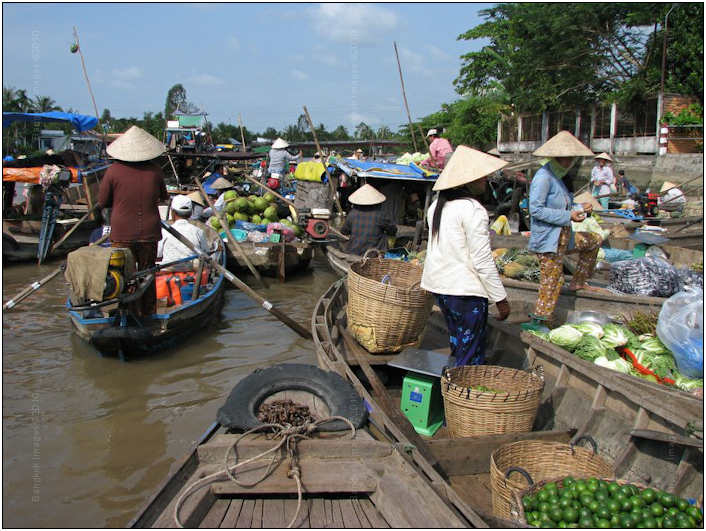
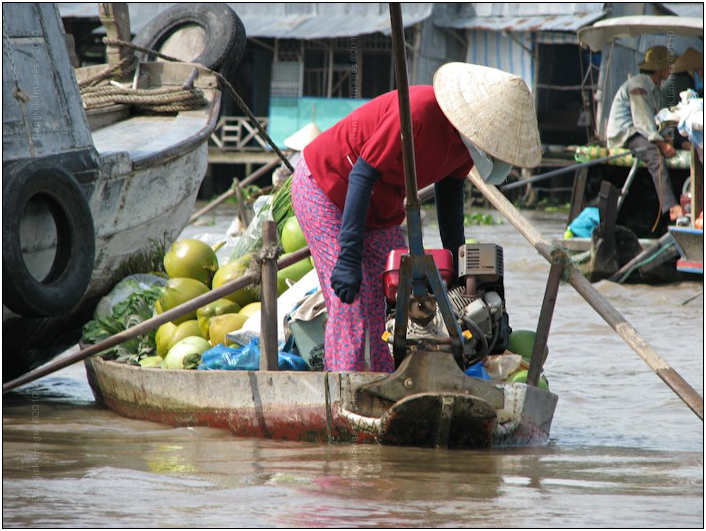
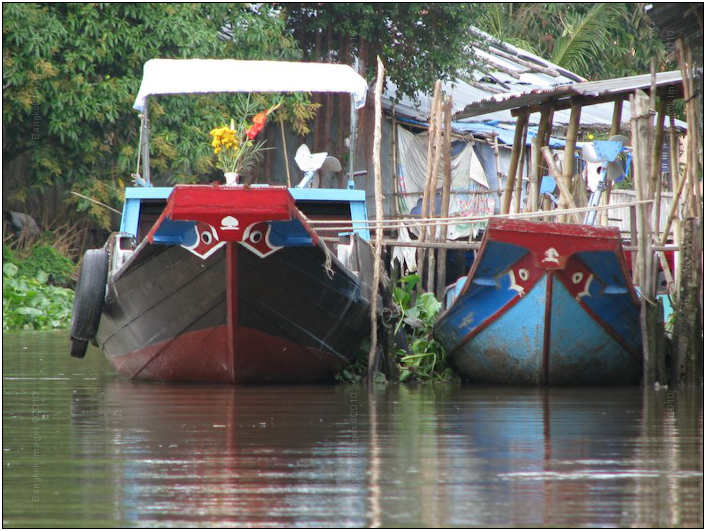
Khunklit –
Nice! I love the boat shots. The people shots are great. What a wonderful look into Vietnam. If at any time in the future you’d like to write some narrative we could easily turn a submission like this into a Featured Destination..
Thank you
Steve
I suspect the readers submissions will be a highly anticipated section of this column and I encourage anyone with photographs and travel accounts they'd like to share to please send them to me at: info@BangkokImages.com
Readers Questions *menu
Steve;
Frustration is the word of the day. Your great, clear picture of the pelican is the source of my frustration.
I am using my NEX-5 as you know and in general the results are good except for the clarity of faces on pictures taken. They do not have the quality that I expected from this camera.
At first I thought it was because the pictures were being reviewed on my laptop. Then looking at them on the desktop monitor they are marginally better but I wanted more.
After looking at your "pelican picture" from this week's column on both monitors the clarity is far superior to my results.
So the question is, is your equipment that much better than the NEX or am I not working the camera correctly?
Most of my "face" pictures are taken in the Program Auto mode and letting the camera pick the focus and metering modes.
My wife, using the Sony DSC HX5V are clearer and sharper then my results from the NEX 5.
Please review the submitted pictures and any advice you can offer will be greatly appreciated. The EXIF information should show the settings used on the cameras for each picture.
I included a couple of fun pictures just for kicks.
Thanks as always
Rick
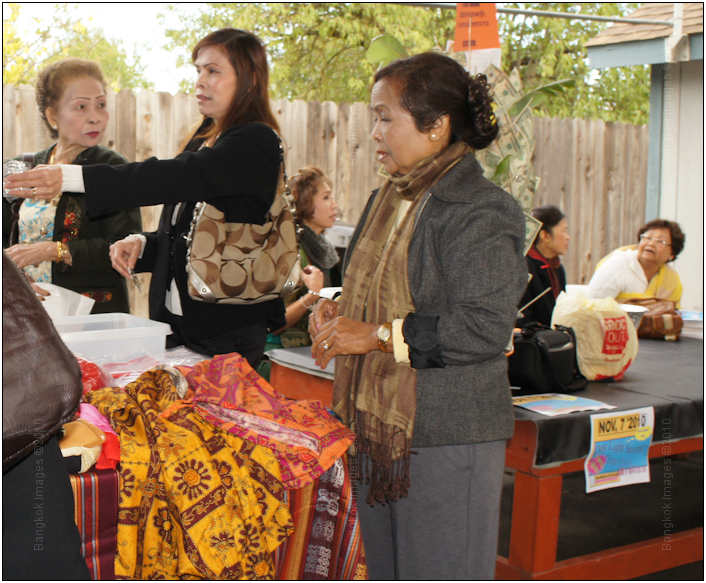
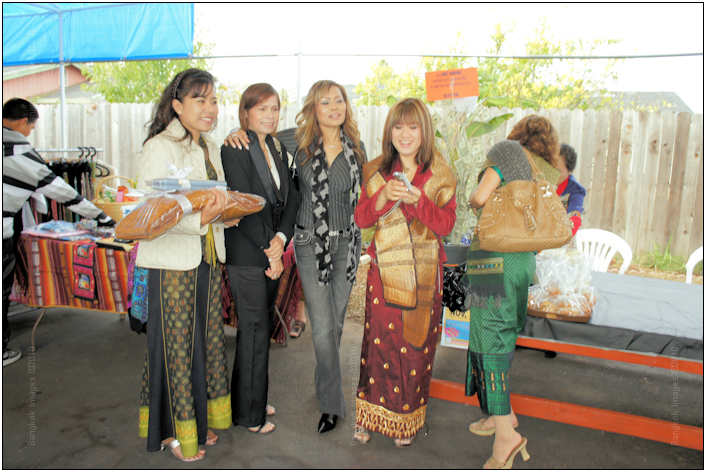
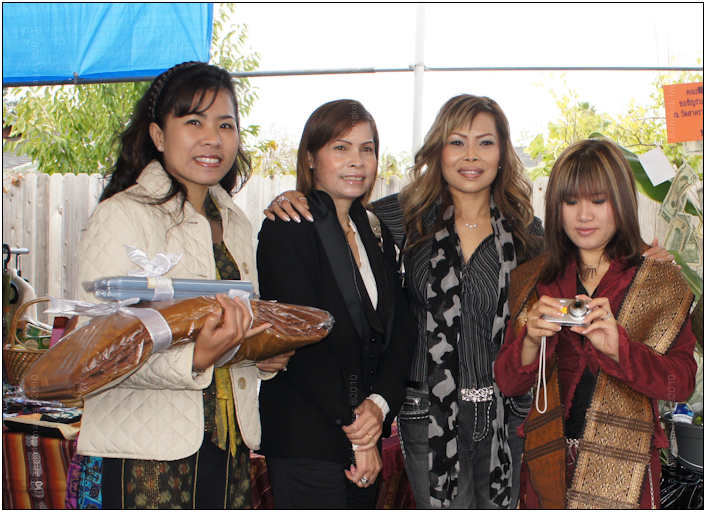
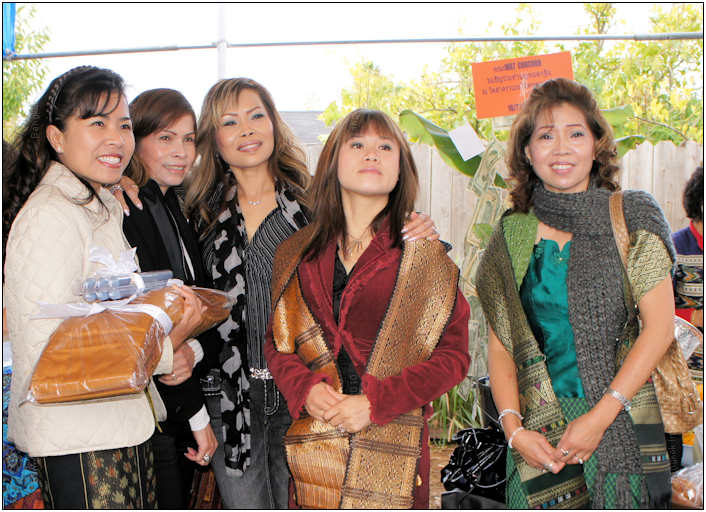
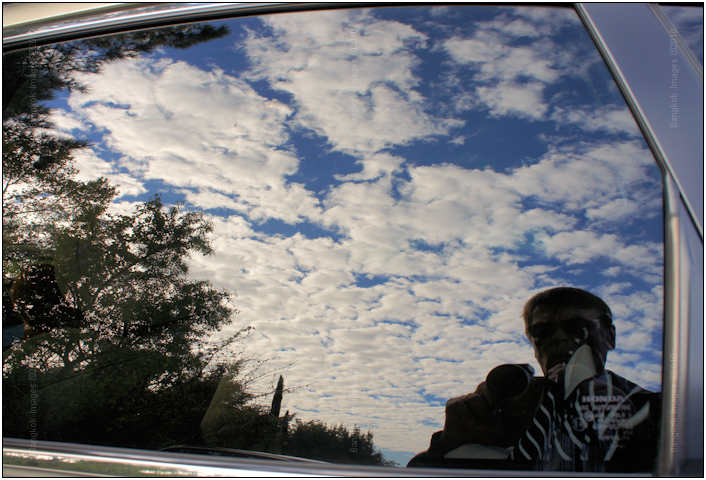
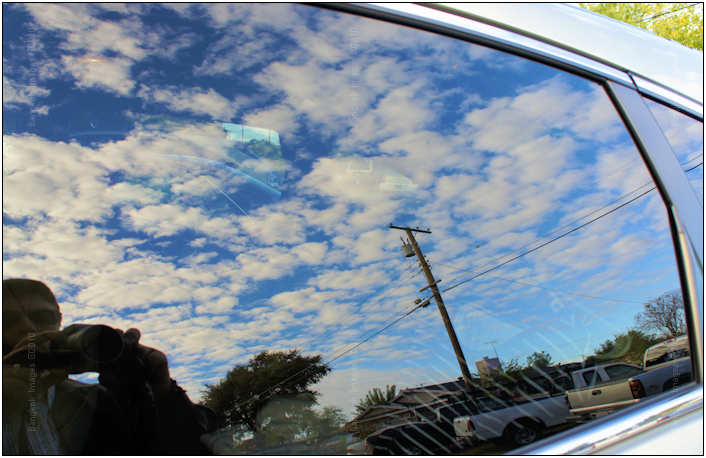
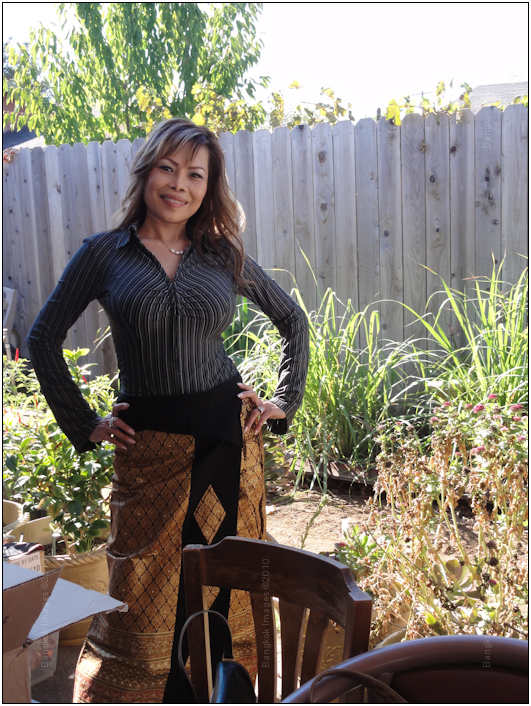
Rick –
I took a look at these images and the exfil data with the camera settings. I see a mix of issues ranging from where you could choose better settings, to camera shake. Allow me to offer the following advice and let’s see if it helps.
- If you’re going for sharpness, try to use F5.6 or better. Remember, the NEX has a APC-S sensor which is MUCH larger than a standard point and shoot, and sensor size is one of the four variables (focal length, focal distance, aperture, and sensor size) affecting depth of field. A point and shoot like your wife’s Sony has a very small sensor, so even at a wide aperture the DOF will be much greater. The bigger the sensor the easier it is to control DOF, the smaller the sensor the less control you have. If you’re used to shooting a P&S with a small sensor it will take some time to adjust to a larger sensor.
- It appears you’re missing the focal point with your autofocus. Try this: With the NEX-5 use the “Flexible AF” point mode. Then you can move the point of focus to where you want it to be in the frame. When photographing just one person, put the focus point on their closest eye. When photographing a group use the smallest aperture you can get away with, and put the focus point between the closest and furthest person in the group.
- Bracing is critical and small cameras are difficult to brace.. especially when using a LCD as a viewfinder. As much as possible bring your elbows into your chest and not stuck out on their own, and really concentrate on being rock solid when taking the shot.
- Remember, the NEX-5 is not a normal P&S, even if it’s as small as one. It has a DSLR size sensor and will require you to mind your technique. Once you get used it the camera and what it requires from you as a operator, your pictures will look great.
I hope this helps. Let’s see some more after you employ these techniques!
Steve
HI Steve
I was interested in you review of Garmin 3790t and I'm thinking of getting one.
A friend has a Tom Tom device and found that he could down load voices of various famous people, i.e. film stars or cartoon characters, to make the announcements from the device.
i.e. Mr. T says "Turn right fool."
This sounds like fun, compared to some of the boring voices that most devices have.
Do you know if Garmin have this option.
In their web site, I could only find a group of about 8 voices of cartoons that I have never heard of. Plus option to use your own or families voice. (I don't think so)
Regards
David
David –
The Nuvi 3790t we reviewed here is certainly the best available GPS.
I understand the voices you’re interested in. They would be a lot of fun.
Garmin provides a free download that lets you put your own voice on their GPS’s, and I suppose there is probably a site somewhere that lets people share these voices.. but I’m not aware of it.
There are a number of commercial sites that sell Garmin voices, but this is one area where tom-tom excels. There seems to be a lot more voices for tom-tom units available.
Check out this link.– you’ll find some links to commercial sites and a lot of good information on voices for Garmin units.
I hope this helps
Steve
Please submit your questions to info@BangkokImages.com All questions will be answered and most will show up in the weekly column.
A Snapshot of Bangkok Images Week in Review *menu

Only one workshop this week and not much else. Very slow. I used the extra time productively and made more improvements to the website. The article pages now have nice thumbnails with formatted entries which look a lot better and I’m finally able to say the site is completed.
I’ve got a lot of positive comments about the new website. www.bangkokimages.com If you haven’t already, check it out. 1000’s of searchable articles and other content, over 50 Thailand galleries, and the “What’s New” are is being updated almost daily. I’ve heard the weather and exchange rate information is useful too. Great news!
I’m still testing more equipment and have more reviews in the pipeline. If you have any neat gear you’d like to write a review on shoot me an email and I’ll do what I can to help.
Infocus Blog, Setting The Tone *menu
This week I had a chance to visit with friends who are new parents. Their baby is just now old enough to comfortably take on short outings. Watching them you could tell they were totally into being parents and the needs of their child. Our visit brought back a lot of memories when my sons were the same age. To my horror it also brought back all the mistakes I’d made, and a few times I’d narrowly averted major mistakes.

I don’t think any parent ‘wants’ to make mistakes, most go to extremes to care for their children and keep them safe. Yet, in times where fear, anger, surprise, and other strong emotions are present we often react without full thought. It’s easy to get caught in the moment. It’s much more difficult to anticipate such moments and set the tone in advance for when certain things occur.

During the police academy, military training, life guard training, and most other types of training I had where events or accidents are likely to happen, the best advice ever offered was to give advance thought to what you’d do when/if certain events happened. “What would I do if I was on patrol and someone walked up to my car, and then pulled a gun?” “What would I do if I was sitting in a restaurant and gunmen robbed the place?”

The theory is, that if you have already anticipated such events, and if you’d already thought out the most logical/correct response, then when such an event happened you’d fall back on your thoughts in the same way you fall back on training, instinctively and naturally. This really works and I could provide you with dozens of such examples which happened to me personally, but I really wanted to share just one:

For many years we lived on a small ranch in Umpqua Oregon. It was normal for kids as young as ten years old to operate farm machinery and vehicles. I was probably more cautious than most, but my middle son was often asked to move vehicles around the property as necessary.
One such time my young son, only 2 years old, was in the shop building helping me when I asked my son to move our 1 ton dually to the front of the shop so we could load an order. He’d done this many times before, but watching him out the window I became uneasy and I noticed my 2 year old in the part of the shop right where I asked my son to park in front of. I walked over and picked him up, and moved back to the other side of the shop and watched through the window.

Everything seemed to be going fine, he was just a few feet from stopping the truck where I’d asked when all of a sudden the truck leaped forward, crashed through the wall of my shop where my youngest had just been playing, and came to rest half in, and half out of the shop. His foot had hit the gas instead of the brake. My middle son looked petrified. I slowly walked over to the truck window kicking boards and ceiling tiles out of my way and said “Son, turn the key off.” The big diesel engine stopped and the silence was deafening.
This was one of the moments I’d anticipated. I reached through the window and put my hand on his shoulder, squeezed, and said: “This is my fault and my responsibility, you didn’t do anything wrong. Take your brother in the house and start dinner and I’ll be in after I clean this up..”
I’m sure he was still in shock, after all he’d just crashed a big truck through my workshop, took out several heavy wood working machines, and both the shop and truck were heavily damaged. But a calm voice, reassurance, and no anger allowed a potentially volatile situation to be defused before it started. Hopefully it would save him from bad dreams and apprehension in the future. More, the truck was now standing exactly where my youngest had been playing before I picked him up seconds before. I’ve had many sleepless nights thinking about what could have happened.
As I watched my two sons walking across the property to the house I allowed myself to breath and it was only then I realized I was really shaking. The truck and shop were nothing.. my two sons being alive and unharmed was everything. Standing there in the rubble of my shop with a busted up truck I felt like the luckiest man in the world. Looking at my watch I realized that was about to change when the wife got home so I quickly backed the truck out, cleaned up the debris, put a tarp over the opening, and went in to help start dinner.

Our children learn from our examples, even how to handle emergencies. Sometimes they learn from us what not to do, other times they learn what’s best to do. We can help achieve the latter by taking a bit of time and thinking through what you’d do “if..” And trust me on this, there will be a lot of “if’s” during the time you raise your children.
My son went on to handle volatile situations and emergencies quite well. He survived two combat tours in Iraq, was married and became the father of her two children, and now teaches calculus at a local high school. My youngest heads off to the university early next year. Setting the tone, in advance, for such times is something we can all do. You never know when it’s going to prevent your life from changing in the worst ways, or help your life change in positive ways. Set the tone now.
Until next time..





